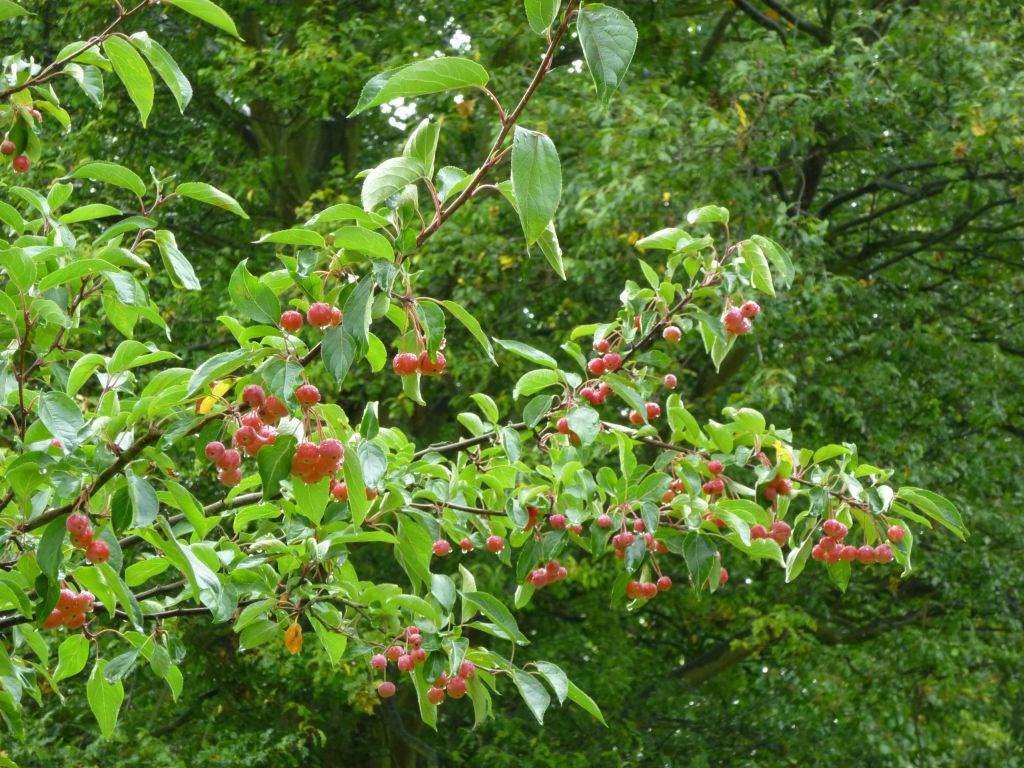#389 (L9) HUBEI CRABAPPLE
Malus hupehensis (aka Malus theifera )

Planted: 2006
View On MapThis tree is to the south of the Malus Avenue, near the west end.
| Distribution: | China, Japan. Slopes and valley thickets of the Himalayan mountains. Critically endangered in Taiwan. Extinct in the wild in Japan. |
| Planting Date: | March 2006. Supplied by James Coles & Sons (Nurseries), Thurnby, Leicester |
| Growth Habit: | Small stiffish wide-spreading tree, with rounded dome. 12 m tall by 12 m wide |
| Bark: | Immature – warm brown with lenticels. Mature – shaggy vertical plates. |
| Leaf: | Dark green, 10 cm long. Entire elliptic ovate, slender and pointed with finely toothed edges. Young shoots covered with whitish down. |
| Flowers: | White from pink buds in clusters of 3 to 7 each on slender downy stalk 2.5cm long. |
| Fruit: | Cherry-like red fruit 1 cm across |
| Potential tree size: | 12 m |
| Uses: | The former name, Malus Theifera, refers to the use of the leaves by peasants in Central China, who prepared a beverage from them which they call “red tea”. Used as rootstock for apples. Cultivated for its fruit. And is the starting point for producing many named hybrids by cross-pollination. |
| Plant Hunter: | Ernest Wilson collected seed in 1908 from Yichang, western Hubei, China. Then sent to The Arnold Arboretum of Harvard University, Boston, United States. |
| Introduction Date: | 1900. Not named until 1915 |
| Anecdotes and Comments | Wilson considered it to be the finest deciduous flowering tree he had introduced. Comes true from seed although Triploid ( usually sterile) but able to produce seed apomictically (without fertilisation). Heartwood reddish grey – sapwood light reddish. When steamed, reddish brown to dark red brown. Wood is hard and has tendency to warp. Difficult to split and work, easily stained and polished. |